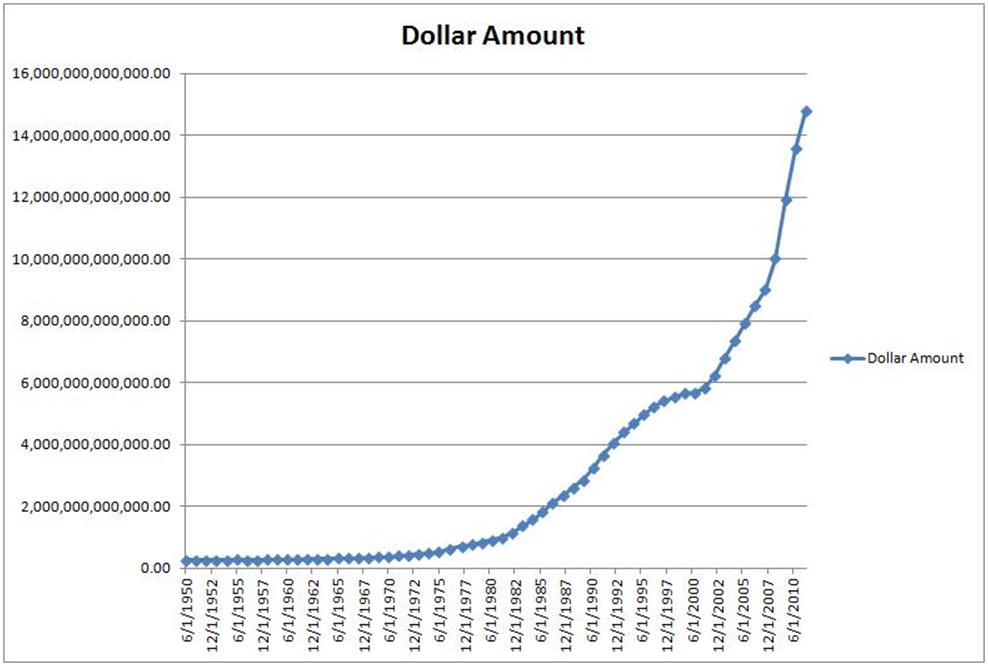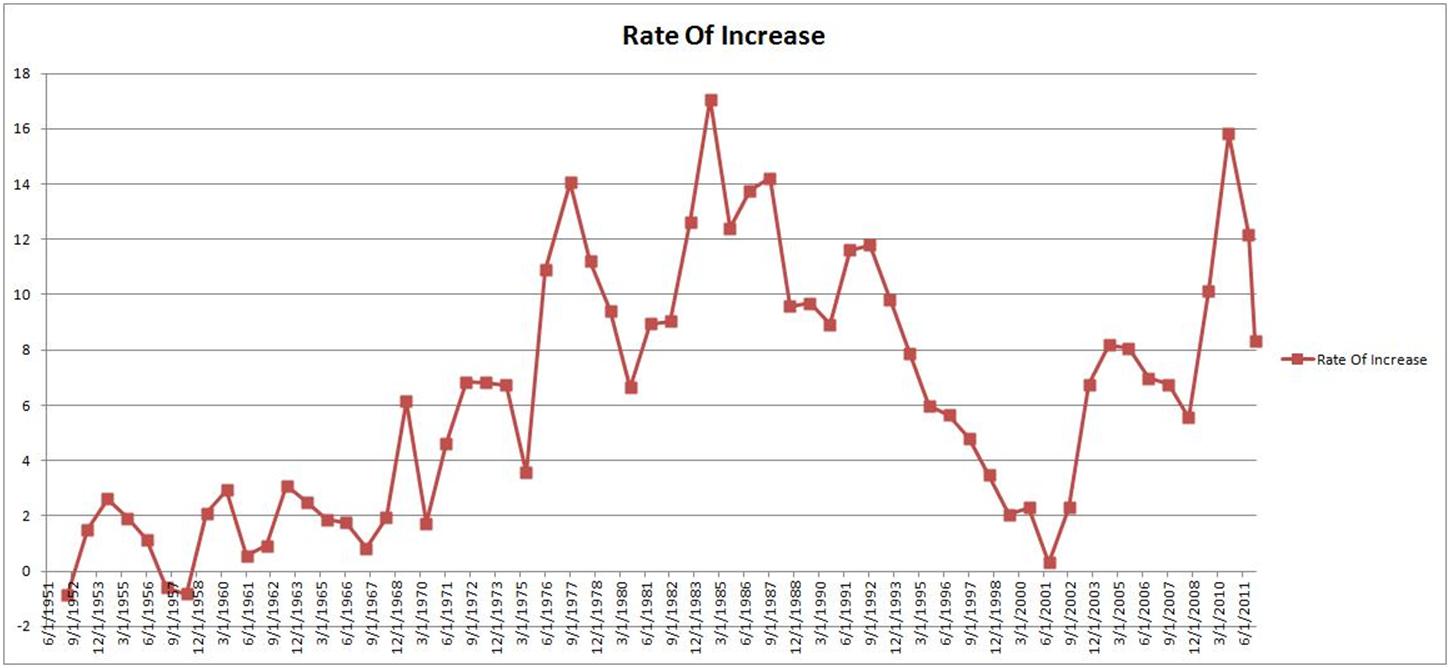Santorum stated today that rights come from above (God) not man. He went on to say that health care is not a right given by God but by man (government – Obama). Let’s forget the fact that Jesus said he came for the sick and not the well and spent most of his time on Earth healing the sick and telling others to care for the sick and poor. So if health care is not from God but man and therefore, we should repeal ‘Obama-Care’ does this mean that we should have no health care? I do not think Santorum would suggest that we just let people die on the street without needed health care. So, as all good conservatives, he must think that the ‘free market’ should take care of the sick. Well, is the ‘free market’ a right given by God? If so, then I think that the ‘free market’ as a right given by God would mean that health care really is a right given by God viz. the ‘free-market’. So God does give us the right to health care but not by man by the ‘free market’. Correct me if I am missing something but isn’t this rhetoric extremely confused? And yet, all the little automatons today cheered vehemently as if they understood exactly what he was talking about – as though it made perfect ‘sense’. My question is where does the ‘sense’ reside, in the rhetoric? I would love for someone to tell me how the ‘sense’ resides in the rhetoric. From what I can gleam the ‘sense’ is not in the rhetoric but in the absolute hatred of the diabolic Obama administration. When a group hates they are bonded by that strong emotion. However, appealing to others that do not hate to join your ‘common sense’ is not effective. Santorum’s speech had no solution for health care only hatred for Obama. The choice is clear solutions or hatred.
Monthly Archives: February 2012
Thoughts on Heidegger and Levinas
A few comments from this thread…
“The Other is not constituted by the self, as Levinas haves it, but the inverse.”
There is no ‘constitution’ of the self from the Other in Levinas. The self is a historical and/or personal retreat from the absolute alterity of the other. The self is a kind of violence that totalizes the other into a representation (ex., from the self), a plastic cast of the face of the other, and thus, brings the Other into the light of rational (ratio), conceptual relatedness that ‘is’, ontologizes, the Other (the tyranny of the same). Levinas wants to think otherwise than being. Being is the archaic violence that effaces the other. Levinas thinks that ontology imagines that the time of the other and my time are commensurate and therefore, levels the Other off into the same – not as identity but as kind, i.e., differences are certainly allowed but the essence of the difference assumes a prior basis for comparison, the ratio of nous, an archical (originary) temporalizing that I and Other exist and move and have our being in. Levinas thought the Other was anachronous to my time, a time not my time, not commensurate in any way to me. He thought that retreat from the face of the other was history and why metaphysics failed. It failed because it lost the Other, transcendence, it made the other into the said, the idolatry of the image and the word.
“Now it is silly to argue that ethics is ontologically prior to ontology (because then ethics simply becomes ontology by another name). Levinas should have argued for the ethical priority of ethics.”
For Levinas ethics is the interruption of ontology. Ethics cannot be a prior ontology to ontology. Ontology is a sort of prison that can only ‘see’ within itself – the originary narcissus. If the Other is a moment of Being or circumscribed in the light of Being then ethics will always, already be pre-understood as a positive relation among beings, an authentic mode of being-with. This ‘already understood’ levels off beings as equal in an essential way, as ontologically identical, known and understood in essence (arche). What gets lost in this is radical difference, perhaps in the direction of Derrida’s ‘differance’ but with an important exception – leveling off favors the neutral. ‘It’ ‘is’ already understood. Essence as ontologically identical reduces the radical alterity of the ‘he’ or ‘she’ into an ‘it’.
Signs, semiology, as endlessly referential, must essentially, undo the knot they tie as they tie it – thus the trace of ‘differance’. The time of signs as Blanchot (Levinas’ mentor) thought is il ya, the there is, it is dead time – it neutralizes the other as another sign, an it, and therefore, loses radical alterity of him or her – it makes the saying the said. All the while the Dread, from an ontological point of view, that must be retreated from is the non-being of the Other, the other than being.
I do not think that you can ‘arrive at Levinas’ as ‘saying the same thing as Heidegger’ (as ‘without being aware of it’). I think that would be an equivalence that would totally miss the direction of Levinas’ thought. Perhaps you may think he is wrong but his work will not allow a similarity to Heideggerian mitsein or an elevation of Heideggerian ethics (whatever that would be).
“The Other is an eternal Fuhrer.”
The Fuhrer controls within the same, it is the System, light, ontology – it is the reduction of the other to the same. To think the same as identical to the Other is to do exactly what Levinas tells us that ontology does. The violence of the pure race is based on absolute, unquestioned knowing of the kind of being of the ‘pure’ and the ‘impure’. This kind of knowing can never be possible in Levinas’ notion of the Other without totalizing the Other under the tyranny of the same.
What about Paul’s Religious Freedom?
A letter from Paul:
My religion believes in real ‘pro life’. We do not know when sub-dividing cells become human life but we do believe that cellular division at conception is NOT yet a ‘human life’ that merits legal protections. As such, our religious freedom has been trampled on by the fake ‘pro-lifers’ that mandated the government could NOT pay for abortions. The fake religion has trampled on the rights of our true religion using the power of the state. Since we know that 18 year olds are certainly human we also had our rights trampled by the state when we had to pay for the Iraq and Afghanistan wars with our tax dollars. We were forced by the state to sin against our pro-life values by paying for wars that killed our children. We also believe that criminals are human beings and capital punishment is murder by the state. Again, our tax dollars are spent on the much more expensive undertaking of the jurisprudence of capital punishment. We also believe that the human being that is alive can decide to end their life. The state will not allow euthanasia and has once again forced itself on us. The latest controversy about contraception is not really about religious freedom; it is about one arrogant religion legislating with the power the state what other religions must do.
Paul
I guess what we need to think about from Paul’s letter is that one religion’s ‘religious freedom’ may be another religion’s state oppression of religious freedom. I suppose there is a valid reason for the separation of church and state as is abundantly clear from history.
Down the Rabbit Hole
Rather often I feel like listening to the Republicans is like living in Alice’s wonderland. Here are some examples:
Who created more debt Bush or Obama?
The opiate truth: Obama increased the national debt vastly more than any other president.
The non-opiate truth:

The Graph – Center on Budget and Policy Priorities is non-partisan.
Here are the latest absolute numbers on the debt increase between President Bush and President Obama:
Bush debt increase: 85%
Obama debt increase: 44%
From January 20, 2001 to January 20, 2009 the national debt increased from $5,727,776,738,304.64 to $10,626,877,048,913.08. For those that still believe in arithmetic this is an 85% increase in the debt over the Bush administration’s term ((10,626,877,048,913.08 / 5,727,776,738,304.64) * 100) = 185% or an 85% increase).
From January 20, 2009 to February 3, 2012 the national debt increased from $10,626,877,048,913.08 to $15,330,778,119,850.60. This is a 44% increase in debt over President Obama’s term ((15,330,778,119,850.60 / 10,626,877,048,913.08) * 100) = 143% or a 43% increase).
Don’t take my word for it, check it out on the US Treasury Department site.
Additionally, there is the discretionary and non-discretionary part of the budget. Discretionary spending is annual spending that the congress and the president have to deal with every year; non-discretionary is mandatory, multiyear spending that has already been committed to by previous administrations (i.e., like food stamps calculated to poverty levels). The non-discretionary portion of the 2011 budget is 59%; the discretionary is 34% (reference).
What Republicans call Obama-Care has not kicked in yet but the GAO wrote a report that I have read from start to finish that claims it will take 100 billion off the budget over 10 years as compared to doing nothing (can’t cherry pick GAO reports in my opinion – ask my wife – she retired from the GAO). However, the 1 trillion dollars over 10 years of Medicare Part D that was passed by a Republican president (Bush) and Republican dominated House and Senate has already started to hit non-discretionary spending. The non-discretionary part of the budget makes up the lion’s share of the increased debt spending that you see at the end of the Bush administration. Part is this has to do with the wars, the national disasters (FEMA) and more importantly the recession. As more people go into poverty entitlements that were all previously linked to poverty numbers kick in with much higher amounts of spending – nothing to do with President Obama. This will be discussed more later in this essay.
Who created more unemployment Bush or Obama?
The opiate truth: Obama increased unemployment vastly more than any other president.
The non-opiate truth:
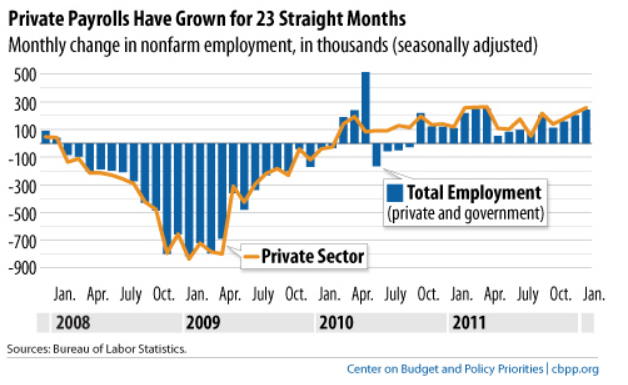
Bush increase in unemployment: 86%
Obama increase in unemployment: 6%
When Bush took office on January 20, 2001, the national unemployment rate was 4.2%. When he left office on January 20, 2009 and President Obama took office the national unemployment rate was 7.8%
The current unemployment rate as of January 6, 2012 is 8.3%
Doing the math, the increase during the Bush administration was (7.8 / 4.2) * 100 = 186% or a 86% increase in unemployment. For the Obama administration the math is (8.3 / 7.8) * 100 = 106% or a 6% increase in unemployment.
* Note: I have revised this based the January, 2009 unemployment number of 7.8%. President Obama took office January, 20, 2009. From the graph below you can see that the unemployment rate exploded just as he got into office. I think this explosion arguably was not due to anything President Obama did in his first few months (just 4 months later the rate was 9.4%) as the national unemployment rate does not turn on the dime but I will give the detractors the benefit of the doubt. There is still a huge difference in 86% (Bush) and 6% (Obama). If the numbers from 4 months after President Obama took office are used they work out to:
Bush administration increase in unemployment: 124%
Obama administration decrease in unemployment: 12%
Transition Date: End of May, 2009
Given this, the difference would be a 136% increase in unemployment during the Bush administration over the Obama administration.
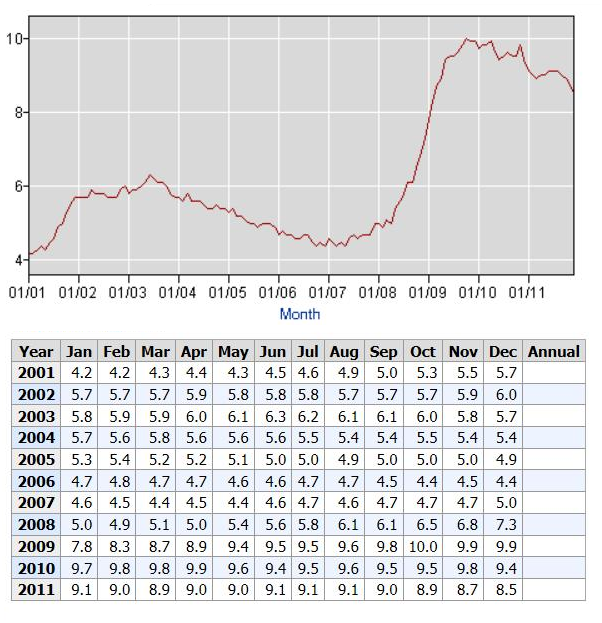
How do Americans feel about abortion?
The opiate truth: The majority of Americans are against abortion.
The non-opiate truth:
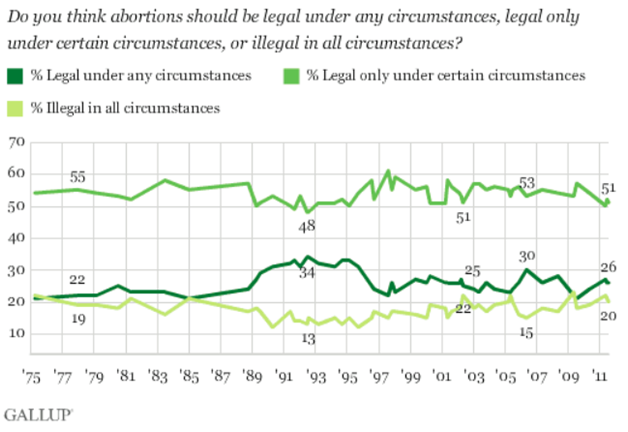
Entitlement programs?
The opiate truth: Entitlement programs do not do anything but waste taxpayers money.
The non-opiate truth:
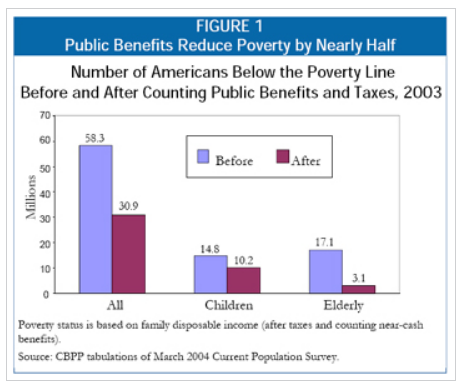
President Obama and food stamps?
The opiate truth: President Obama is the ‘food stamp president’.
The non-opiate truth:
Food stamps have been tied to poverty levels for decades. President Obama has nothing to do with the automatic levels that kicked in due to the recession that started in the Bush administration.
Additionally, many of the entitlement programs are tied by law to the poverty line and/or adjusted income.
Introduction to the Supplemental Security Income (SSI) Program
Interesting chart…

Even with all the additional expenses of non-discretionary entitlement programs kicking in during the Obama administration, the rate of increase of the national debt is still less that the Bush administration.
This is a graph of the debt since 1950 (click on the graphs to make them larger)…
This is the rate of increase of the debt since 1950…
Please note the difference from 2001 to 2009 and 2009 to 2011. This is Bush vs Obama
Note: The graph only uses full fiscal year data. The last fiscal year ended was September 30, 2011
Here is the data and links to the Treasury Department to verify the numbers…
The links shown above are:
Historical Debt Outstanding – Annual 2000 – 2010
Historical Debt Outstanding – Annual 1950 – 1999
The Debt to the Penny and Who Holds It
Debt Position and Activity Report
The Debt to the Penny and Who Holds It (type in Enter Beginning Date: 9/30/11)
Please, don’t vote and do drugs!
Attention Microsoft Software Vendors
To All Software Vendors:
Please pass this message around and post it here (or your own custom message)…
http://social.msdn.microsoft.com/Forums/en-HK/iewebdevelopment/threads
You can also open up tech support cases on this topic.
Let’s let Microsoft know that we exist please!
Dear Microsoft,
We, your software vendors, have had our businesses damaged by SmartScreen. As you rightly state,
“Users are choosing to delete or not run malware 95% of the time from the new Application Reputation warnings” – Microsoft
http://blogs.msdn.com/b/ie/archive/2011/05/17/smartscreen-174-application-reputation-in-ie9.aspx
What this means is that 95% of our future business will not exist. Currently, 95% of our business that runs into false ‘Reputation’ alerts is non-existent.
Question:
How can we develop a ‘reputation’?
-It appears that no new software vendor (or new to SmartScreen statistics) can ever develop a ‘reputation’ once everyone is using this technology because 95% of our customers will not download after they get the message.
Code signing does absolutely nothing to solve this problem. Do we need a second signature?
We plan to keep asking this question until we get a real answer.
Mark
Postmodern Rationalism
“Throughout his writings, Foucault valorizes figures such as Hölderlin, Artaud, and others for subverting the hegemony of modern reason and its norms and he frequently empathized with the mad, criminals, aesthetes, and marginalized types of all kinds.”
http://pages.gseis.ucla.edu/faculty/kellner/pomo/ch2.html
Isn’t this a new form of rationalism? How does it appeal to the ‘other’ of rationality without itself being implicated in rationality – is this the hyper-modernism in post-modernism? Could this be the work of another canon in the margins of a canon? It seems to me that a total rejection of the tradition can only do so in the tradition. The polar oppositions of the holy and the profane, the proper and improper can only perpetually reinvigorate themselves symbiotically. Derrida seemed to understand this and showed his discomfort with ‘deconstruction’ as the nuevo canon. Postmodernism must, from within the tradition, continually bring out its a-situated-ness, its inability to dwell, its ear for the strange and unsettled to hint at impoverishment. Otherwise, it certainly is another name for modernism. It must show the kairos, the supreme moment of indecision that must decide in privation (steresis), the in-between and the middle voice that cannot settle in the new-become-old. Being as suspended between rootedness and uprootedness, its arche as indeterminate, not as matter (hule) and form (morphe) that has its origin within itself OR as hule and morphe that gives itself over to an origin not within itself in techne – this is anarchy. The rootedness and the up-rootedness necessarily results in aufhebung (synthesis, lifting up) not abhebung, the thrown from within, with the emphasis on the violence of ‘thrown’; torn without relief not raised (aufhebung) as transformational, together-with, oppositions. Certainly, oppositions essentially belong together; they find their uniformity in their difference but ‘differance’ does not rest – it disturbs as radical alterity without recourse, adrift in violence without even the nothingness of anxiety – dread which cannot lose itself or cease to be. In this then the work of a new Greek beginning arouses.
